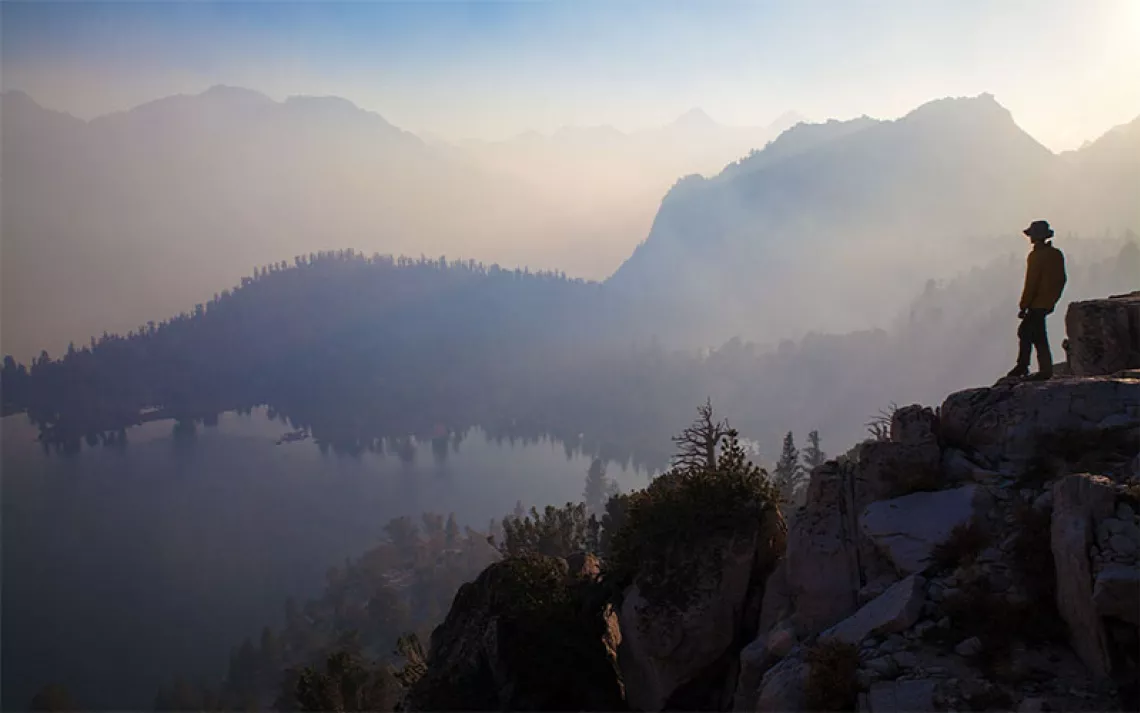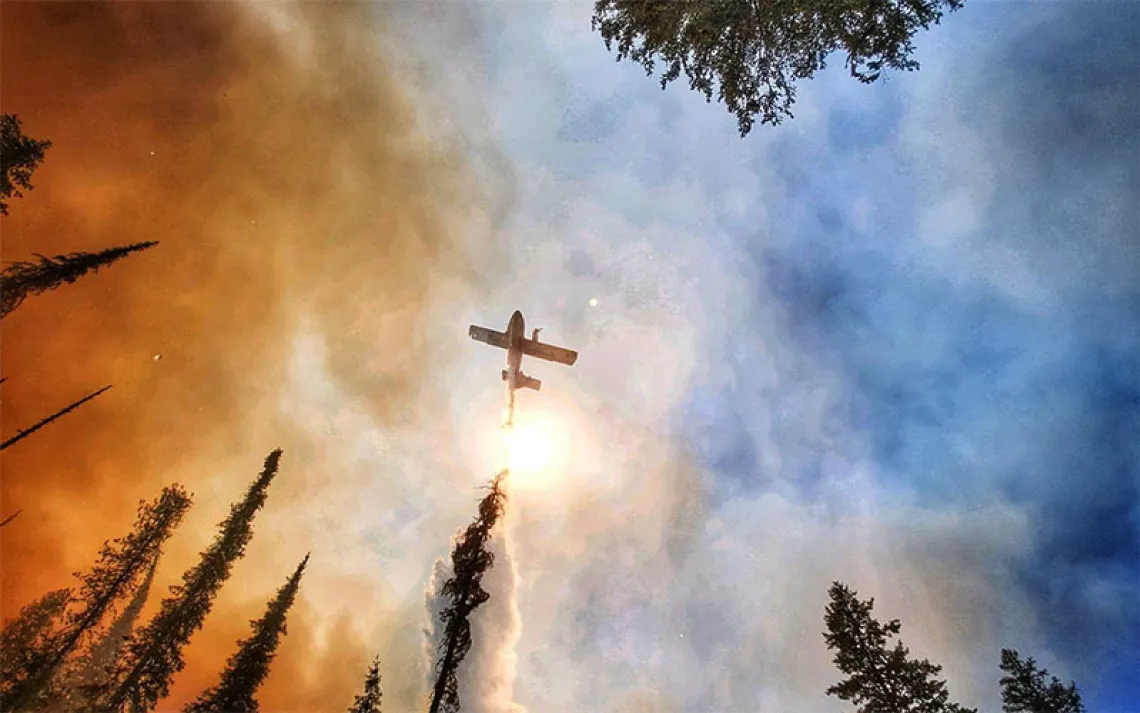Fracking in Arizona Could Lead to the Next Helium Boom
Trump’s “energy dominance” policy threatens Petrified Forest National Park

Photo by spfdigital/iStock
The high desert of northern Arizona was once a tropical forest, home to large animals with sharp teeth—crocodilians, small dinosaurs, and reptiles. Freshwater sharks swam in the streams. Trees fell, animals died off, and the whole mess fossilized in layers of primordial muck. Millions of years later, the desert heaved up petrified logs, sharks teeth, and bones. We know this area today as Petrified Forest National Park—a place where tourists can hike and take in sweeping views of the Painted Desert.
Conservationists say those views could be spoiled by a new feature on the landscape: gas wells. A Bureau of Land Management policy change allows the agency to approve gas drilling with very little public input. Some fear that fracking is just around the corner and that local water supplies are in jeopardy.
But there’s another resource attracting companies here that are looking to turn a profit: helium, a rare byproduct of natural gas extraction. With the price of helium going up and the Trump administration trying to jump-start drilling on public lands, that threat is not likely to go away. Documents on file with the Arizona Department of Environmental Quality show that one company, Ranger Development, has receieved well stimulation permits for just outside the park.
Helium is not just something you put in balloons. It is also used in magnetic resonance imaging, semiconductors, nuclear reactors, scuba diving, fiber-optic telecommunications, space propulsion, and scientific research.
Helium is so light that gravity won’t hold it to the planet; any time helium is released and not captured at the source, it’s gone.
About 40 percent of the nation’s supply of helium comes from a government helium reserve near Amarillo, Texas. In 1996, Congress voted to phase out the reserve and turn the helium market over to the private sector. Twenty years later, researchers issued a report that said the price of helium had jumped by 250 percent since 2009.
Those marketplace dynamics could be bad news for Petrified Forest National Park.
In the late 1800s, extractors blasted away at the forest’s petrified wood and shipped it on freight trains; tourists would commonly pocket whatever they found. President Theodore Roosevelt created a monument in 1906 to preserve some of these natural treasures. Cattle ranchers settled outside the monument, turning their herds loose on a checkerboard of federal, state, and private lands, also rich in fossils. The monument became a park in 1962. Still, the remote nature of these badlands and windswept flats made it easy for souvenir hunters to haul away bits of petrified wood and plunder archaeological sites outside park borders.
In 2004, Congress voted to expand Petrified Forest to help preserve the region's fossils and other resources. Since then, the park has secured 15,228 acres from the BLM and another 37,770 acres from local ranchers in deals largely financed by the Land and Water Conservation Fund. As the park surveyed the new lands and made its purchases, it did not buy mineral rights.
“They thought they had no value. When they did their analysis, this was before anybody ever thought of helium,” said Kevin Dahl of the National Parks Conservation Association.
As the park negotiated with local ranchers and the state, potash-mining companies snapped up mineral leases, promising jobs to local communities and royalties to the state. The expansion stalled. One, Passport Potash, held leases to lands within the park expansion for years.
Dahl said the companies were created to sell penny stock until someone bought them out. But potash is not rare. Big players, who would not talk on the record, had plenty of potash and showed no interest in coming to Arizona, where it would take $1 billion in start-up costs to dig. The price of potash fell. The small companies lost interest or went bankrupt.
About the time the potash companies had faded into memory, Donald Trump was elected president. The BLM began to streamline the process of leasing public lands for oil and gas drilling. Companies took advantage of the policy change to snap up leases throughout the West.
As conservationists began to look into a couple of proposed Arizona gas leases, they were alarmed to find that some companies were already drilling exploratory helium wells.
“There have been helium exploratory wells the last couple years; we just didn’t know about it,” Dahl said. “And then when you looked around, you said, ‘Wow.’ ”
A proposal by Rare Earth Exploration would drop a well inside the park. That project will go through some type of environmental review; exactly what kind won’t be clear until the developer brings a more detailed proposal.
But projects outside the park could sidestep environmental review, said Taylor McKinnon of the Center for Biological Diversity. Aquifer protection permits on file with the Arizona Department of Environmental Quality have authorized “stimulation campaigns” for up to 80 helium-well permits near Chambers, Arizona. In other words: fracking.
Fracking, or hydraulic fracturing, is the process of using pressure to dissolve the bonding between layers of rock in order to free up the natural gas held within. Geologists say that fracking can be done with water, air, or sand. But it can also be done with acid, chemicals, or any combination of these materials. A growing body of evidence suggests that such materials can pollute groundwater.
Fracking has generated a number of lawsuits, but most of them are sealed, said Kevin Gibson, a spokesman for No Frack AZ. “There is no such thing as a perfectly safe mining operation,” Gibson, a retired mining engineer who lives in eastern Arizona, said. “Mining’s always been about risk and return. You can’t have a modern society without mining.” But he points out that the risks of an acid stimulation campaign, in a region with very little water, are not worth the reward.
In the summer of 2018, the BLM offered up leases near the community of Woodruff, located along the Little Colorado River. Local residents expressed concern over how quickly the companies have moved in and the impacts these operations could have on local water supplies.
“Obviously we’re very concerned about this. In a state like Arizona, where water is precious, just the idea of fracking raises alarm bells,” said Sandy Bahr, director of the Grand Canyon Chapter of the Sierra Club.
Lisa Test, a mother of four who helped form No Fracking AZ in her spare time, said they barely got their protest to the BLM on time. “They said you can either send it certified mail or fax it, and their fax machine was down, so we had to overnight it to the BLM in Phoenix,” she said.
Community members have a lot of questions, including one in particular: What’s the hurry?
“We have these ADEQ permits that authorize acid fracking. We have no federal review. . . . This is all happening in a black box, and there are enormous values at risk,” McKinnon said. “If they screw up the groundwater out there, they’ll never be forgiven.”
Drilling could also have noise and light impacts in the park, Dahl pointed out, as well as visual impact of wells in and out of the park. The wells would be part of the vistas seen at scenic overlooks. “The Petrified Forest is known for its views of the Painted Desert, these remarkable geological formations,” he said.
Last year, the Center for Biological Diversity and more than a dozen other groups, including the Sierra Club, protested the BLM leasing plans in July. The BLM has ruled against the protest.
“The next step would be federal litigation,” McKinnon said. “And we have certainly not ruled that out. The BLM and the Trump administration have made a mockery of the National Environmental Policy Act and its principles of public participation and environmental prudence.”
 The Magazine of The Sierra Club
The Magazine of The Sierra Club



